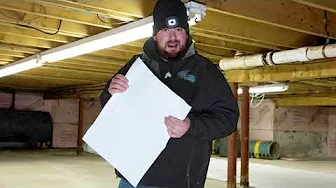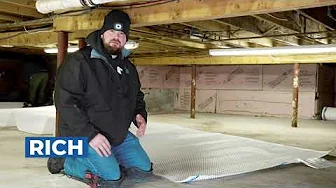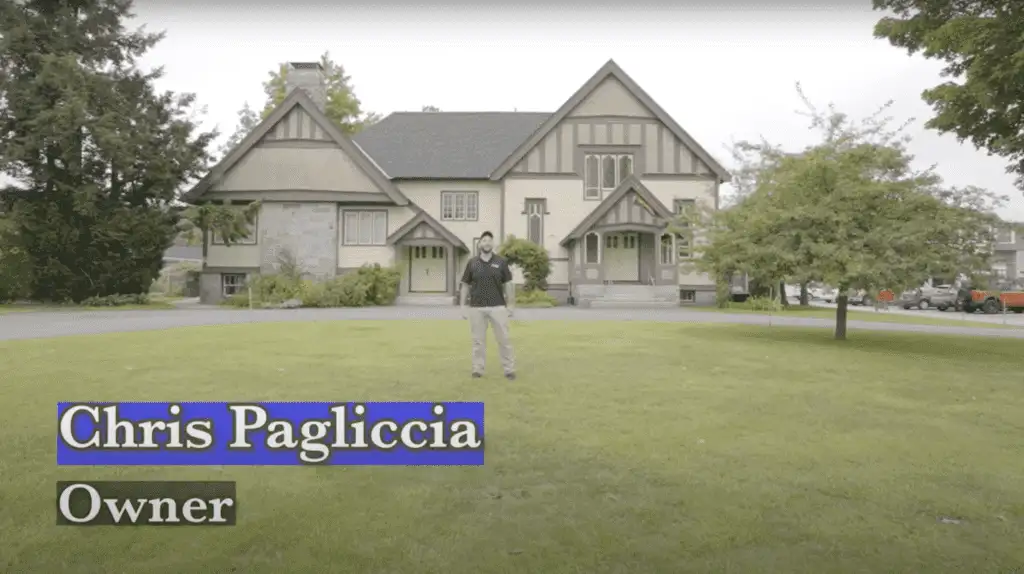Foundation Crack Repair York ME
Cracks in your foundation can signal potential structural problems that need immediate attention. Even small cracks can grow larger and lead to serious damage if ignored. Homeowners in York, ME, need to understand the causes, risks, and solutions for foundation cracks to protect their homes and maintain property value.
Real People - Real Great Results
Crawl Space Video Playlist
Understanding Foundation Cracks
Foundation cracks are more than just cosmetic blemishes; they’re signals, often subtle at first, that your home’s stability could be at risk. Whether you’ve noticed a small hairline fracture in your basement wall or a jagged diagonal crack creeping along your foundation, understanding what caused it and what it represents is crucial. Let’s break it down.
What Causes Foundation Cracks?
Cracks don’t appear out of nowhere—they’re usually the result of external forces acting on your home. One of the biggest culprits is soil movement. In places like York, ME, where seasons are dynamic, the soil shifts constantly. Rain and snowmelt saturate the ground, causing the soil to swell. Then, dry periods set in, and the soil pulls back, shrinking to a more compact state. Your foundation gets caught in the middle of this tug-of-war.
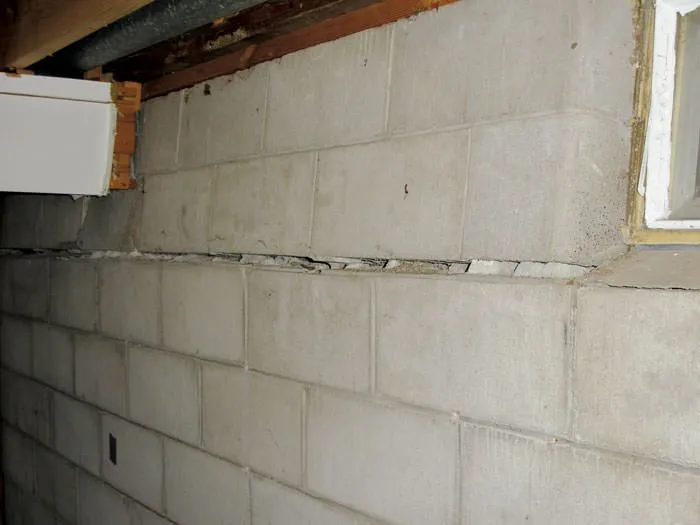
Settling is another major factor. For newer homes especially, settling happens naturally as the ground adjusts to the weight of the structure above it. Most of the time, it’s harmless. However, when the settling is uneven—due to irregular soil composition, poor compaction during construction, or natural shifts—it can lead to more serious cracking.
Then there’s poor drainage, a surprisingly common issue. This isn’t just about puddles forming near your house after a storm. When water accumulates around your foundation, it adds hydrostatic pressure against the walls, pushing them to their limit. Over time, the stress causes fractures that may eventually widen if not addressed.
Finally, let’s not forget temperature swings, something Maine residents are all too familiar with. Freeze-thaw cycles force concrete and masonry to repeatedly expand and contract. The result? Over time, cracks form, widening further with each season they’re exposed to the elements.
Types of Foundation Cracks
Not all cracks are created equal—and not all are panic-worthy. Hairline cracks are common and usually harmless. These are the tiny lines you might see after the materials in your foundation shrink slightly as they cure or dry out. Still, they’re worth watching.
Vertical cracks are next on the scale. While they’re often caused by harmless settling, they can let water seep in if left open. On the other hand, diagonal cracks are more worrisome, as they hint at uneven stress—like one corner of your home sinking faster than the rest.
Lastly, there are the horizontal cracks, the ones you don’t want to ignore. These happen when external forces, such as soil pressure or water buildup outside your walls, push the foundation sideways. Horizontal cracks often mean your home is under serious stress and could require immediate intervention.
Why You Shouldn't Ignore Foundation Cracks
Tiny cracks may not seem like a big deal, but here’s the catch: they rarely stay tiny. Water loves to find a way inside, and once it does, it brings friends—mold, mildew, and even rot. Cracks also act as a red carpet for pests such as ants and termites, which can cause their own set of problems.
And there’s the big picture: foundational stability. A few ignored cracks today may mean hundreds or even thousands of dollars in repairs tomorrow. Over time, small fractures can deepen, floors may begin to slope, and walls may bow. Staying proactive is key to avoiding larger, costlier problems.
When it comes to foundation cracks in York, ME, understanding the “why” and the “what” is the first step toward fixing the problem. Your home is only as stable as the ground it rests on—and with a bit of awareness, you can make sure cracks don’t compromise that stability.
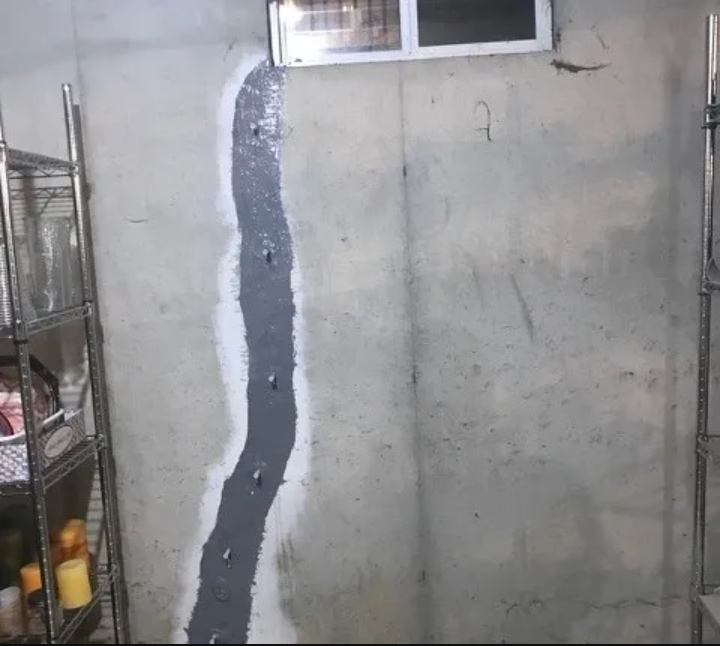
Steps for Foundation Crack Repair
Inspection Comes First
Before rolling up your sleeves or calling in the pros, start with a careful assessment. Walk the perimeter of your home and check both the interior and exterior of the foundation. Pay attention to details: Is the crack wide or narrow? Straight or jagged? Vertical, diagonal, or horizontal? Each tells a story about what your foundation is facing. Take note of any accompanying issues like water stains, sticking windows or doors, or even uneven floors—they could be clues pointing to how serious the problem is. And don’t skip the dark corners of your basement; that’s often where the first signs show up.
DIY Repairs for Minor Cracks
If you spot small cracks—those under 1/8 inch wide—you can likely tackle the job yourself. Grab some epoxy injections or a masonry sealant from your local hardware store. Clean the area thoroughly to remove debris and moisture before applying your chosen sealant. These products are designed to bond tightly to concrete and keep out water, pests, and dirt. But remember, a patch job isn’t set-it-and-forget-it. Keep an eye on those cracks over the weeks and months to ensure they aren’t getting bigger. A hairline crack today can turn into a structural headache down the road.
When To Call a Professional
Here’s the rule of thumb: If you’re breaking out a ruler to measure a crack’s width or if it’s running horizontally or in a staircase pattern, it’s time to bring in the experts. These types of cracks can indicate serious pressure or uneven settling that needs more than just a quick fix. Professionals have the tools—and the know-how—to diagnose and repair these issues effectively. Also, don’t ignore any signs of water seepage or moisture coming through your foundation; water is your home’s worst enemy. The longer you wait, the more expensive the repair will likely become. When in doubt, it’s better to call a foundation specialist sooner rather than later.
Techniques Used by Professionals
Foundation crack repair is not one-size-fits-all. While minor cracks can often be handled DIY, more severe cases call for specialized techniques employed by professionals who understand the complexities of foundation structures. Each method below addresses a specific type of crack or underlying issue to ensure long-term stability and protection.
Crack Injection
This method bridges cosmetic and structural fixes, making it one of the most common professional techniques. Low-pressure injections using epoxy resin or polyurethane foam are highly effective for filling cracks from the inside. While epoxy restores structural integrity, polyurethane is better suited for sealing cracks that allow water infiltration. Both materials act as a long-term solution to keep moisture out and prevent further deterioration. This method is ideal for targeting vertical or diagonal cracks that haven’t resulted from foundational movement.
Hydraulic Cement
Hydraulic cement comes into play for larger, more noticeable cracks that need immediate sealing. Applied as a paste, this material expands slightly as it cures, making it excellent for tightly patching cracks that span the foundation wall. While it’s not a permanent structural fix, it serves as a quick, efficient way to stop water leaks and fortify weakened sections. It’s often the first step in stabilizing a problematic area before moving on to more intensive repairs.
Foundation Piering
For homes suffering from significant settling, foundation piering offers a robust solution. This technique involves driving steel or concrete piers deep into stable soil or bedrock beneath the shifting foundation. By lifting and stabilizing the structure, piering resolves issues of uneven settling while stopping cracks from spreading further. While it’s a more intensive and costly approach, it’s invaluable for maintaining the safety and structural integrity of homes experiencing foundational instability.
Wall Reinforcements
For horizontal or staircase cracks caused by soil pressure or bowing walls, professionals often recommend wall reinforcements. These systems involve installing carbon fiber straps, wall anchors, or steel braces to redistribute pressure and stabilize the affected walls. Carbon fiber straps are a low-profile solution suitable for less severe bowing, while wall anchors and braces provide additional support for more critical cases. This preventive measure strengthens the foundation against future stress and keeps cracks from worsening.
Each of these professional techniques is tailored to specific symptoms and underlying causes of foundation damage, ensuring issues are addressed comprehensively rather than superficially. When repairs are handled correctly the first time, homeowners gain peace of mind knowing their foundation is safeguarded against further risks.
Preventing Future Cracks
Keeping foundation cracks at bay requires a mix of vigilance and smart maintenance habits. These simple yet effective measures can save you from costly repairs down the road.
- Maintain Good Drainage: Start by ensuring your gutters and downspouts are doing their job—directing water far away from your foundation. Plugged gutters or poorly placed downspouts can turn a light drizzle into a foundation-damaging torrent around your home. Clean gutters regularly and extend downspouts at least five feet from your foundation for good measure.
- Soil Grading: Pay attention to the land around your house. It should slope gently away from the foundation—think a 5% grade over 10 feet. This prevents water from pooling near your home after storms. Not sure about your grading? Stand back during a rainstorm and see where the water naturally flows or puddles.
- Monitor Vegetation: As much as those big, old trees add charm, their roots can wreak havoc on your foundation. Keep trees, shrubs, and other large plants at least 10–15 feet away, especially if you’re dealing with root systems known for seeking moisture beneath foundations.
- Control Moisture Levels: The soil around your home doesn’t do well with extremes. During dry spells, water it lightly to keep it from pulling away from your foundation. This is especially crucial if your home in York, ME, is built on clay-heavy soil, which shrinks when dry and expands when wet, causing uneven pressure on your foundation.
Think of these steps as a “stitch in time” approach. Foundation issues don’t go away on their own. But with a little attention to drainage, grading, and exterior upkeep, you can significantly reduce the risk of unwanted complications.
The Importance of Addressing Cracks in York, ME
York, ME, isn’t just postcard-perfect—it’s also a battleground for foundations thanks to its challenging environmental conditions. Winters bring relentless freeze-thaw cycles, while humid summers push moisture deep into the soil, creating a perfect storm for foundation cracks. Add in soil types like clay and sand, which are notorious for shifting and settling, and it’s easy to see why a “small crack” here can quickly snowball into a big problem.
What makes these cracks especially problematic in York is the region’s susceptibility to compounding factors. That hairline fracture you’re ignoring? With Maine’s fluctuating freeze-thaw cycles, it won’t stay hairline for long. Water seeps into the smallest gaps, freezes, expands, and — boom — your once-minor issue now demands significant attention and a much bigger budget.
Moreover, cracked foundations don’t just look bad; they compromise your home’s stability, energy efficiency, and even resale value. And let’s not forget, cracks are like open invitations for moisture, mold, and the occasional indoor ant army. Costs and complications add up fast.
Addressing foundation cracks in York isn’t just about fixing existing issues; it’s about safeguarding your biggest investment. The earlier you tackle the problem, the more peace of mind you gain—because in York, a strong foundation isn’t just a luxury. It’s a necessity.

Conclusion
Foundation cracks are more than superficial—their presence signals stress that, if left unchecked, can compromise the very core of your home. In York, ME, where the climate and soil conditions create a perfect storm for foundation challenges, vigilance isn’t optional; it’s necessary. By taking proactive steps to inspect your foundation regularly, addressing cracks as they appear, and implementing preventative measures like proper drainage and soil management, you can avoid escalating repairs that drain your wallet and peace of mind.
Not every crack requires a professional, and not every repair is urgent, but knowing the difference is crucial. Tackle the hairline fissures on your own with epoxy or sealant, but don’t shrug off the horizontal or staircase ones—they’re structural red flags. When in doubt, don’t gamble; call in a contractor with the tools and expertise to stabilize your foundation for the long haul.
A solid foundation is literally what your home stands on. Maintaining it isn’t just about property value; it’s about the security of the place you call home. Handle the small problems before they grow, and you’ll save yourself from bigger headaches down the road. It’s maintenance that pays dividends every day you sleep soundly with walls that hold steady.
Reviews from Happy Customers
Our top priority is customer satisfaction, and we work closely with clients to understand their unique needs and goals.




